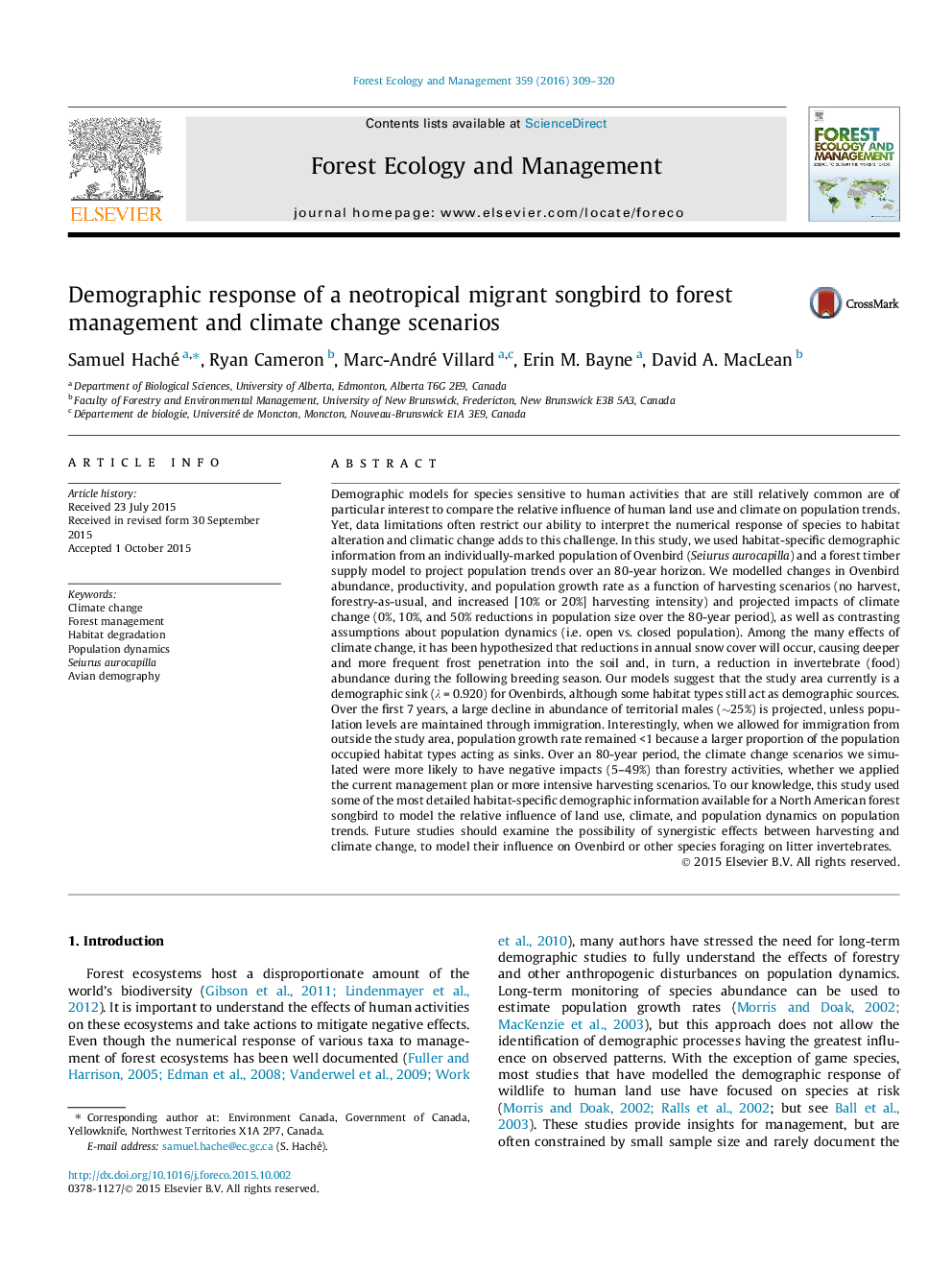| کد مقاله | کد نشریه | سال انتشار | مقاله انگلیسی | نسخه تمام متن |
|---|---|---|---|---|
| 6542685 | 159164 | 2016 | 12 صفحه PDF | دانلود رایگان |
عنوان انگلیسی مقاله ISI
Demographic response of a neotropical migrant songbird to forest management and climate change scenarios
ترجمه فارسی عنوان
واکنش جمعیت شناختی پرندگان مرموز نئوتروپیک به مدیریت جنگل و سناریوهای تغییرات آب و هوایی
دانلود مقاله + سفارش ترجمه
دانلود مقاله ISI انگلیسی
رایگان برای ایرانیان
کلمات کلیدی
موضوعات مرتبط
علوم زیستی و بیوفناوری
علوم کشاورزی و بیولوژیک
بوم شناسی، تکامل، رفتار و سامانه شناسی
چکیده انگلیسی
Demographic models for species sensitive to human activities that are still relatively common are of particular interest to compare the relative influence of human land use and climate on population trends. Yet, data limitations often restrict our ability to interpret the numerical response of species to habitat alteration and climatic change adds to this challenge. In this study, we used habitat-specific demographic information from an individually-marked population of Ovenbird (Seiurus aurocapilla) and a forest timber supply model to project population trends over an 80-year horizon. We modelled changes in Ovenbird abundance, productivity, and population growth rate as a function of harvesting scenarios (no harvest, forestry-as-usual, and increased [10% or 20%] harvesting intensity) and projected impacts of climate change (0%, 10%, and 50% reductions in population size over the 80-year period), as well as contrasting assumptions about population dynamics (i.e. open vs. closed population). Among the many effects of climate change, it has been hypothesized that reductions in annual snow cover will occur, causing deeper and more frequent frost penetration into the soil and, in turn, a reduction in invertebrate (food) abundance during the following breeding season. Our models suggest that the study area currently is a demographic sink (λ = 0.920) for Ovenbirds, although some habitat types still act as demographic sources. Over the first 7 years, a large decline in abundance of territorial males (â¼25%) is projected, unless population levels are maintained through immigration. Interestingly, when we allowed for immigration from outside the study area, population growth rate remained <1 because a larger proportion of the population occupied habitat types acting as sinks. Over an 80-year period, the climate change scenarios we simulated were more likely to have negative impacts (5-49%) than forestry activities, whether we applied the current management plan or more intensive harvesting scenarios. To our knowledge, this study used some of the most detailed habitat-specific demographic information available for a North American forest songbird to model the relative influence of land use, climate, and population dynamics on population trends. Future studies should examine the possibility of synergistic effects between harvesting and climate change, to model their influence on Ovenbird or other species foraging on litter invertebrates.
ناشر
Database: Elsevier - ScienceDirect (ساینس دایرکت)
Journal: Forest Ecology and Management - Volume 359, 1 January 2016, Pages 309-320
Journal: Forest Ecology and Management - Volume 359, 1 January 2016, Pages 309-320
نویسندگان
Samuel Haché, Ryan Cameron, Marc-André Villard, Erin M. Bayne, David A. MacLean,
